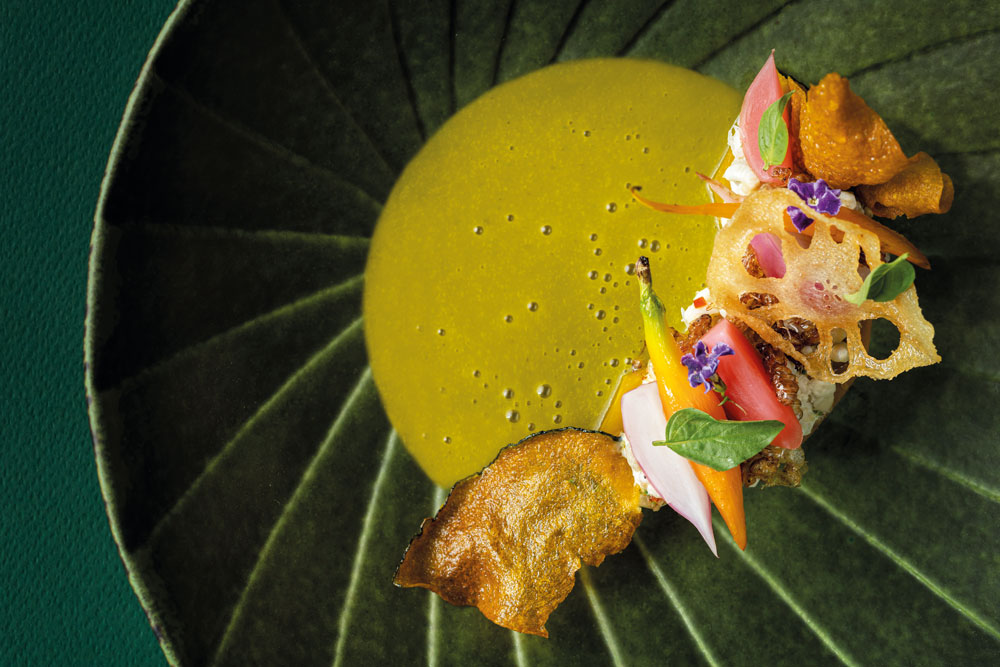Le Du’s Thitid Tassanakajohn shares with Eve Tedja about his commitment to work with local food producers and his latest Thai kaiseki venture.
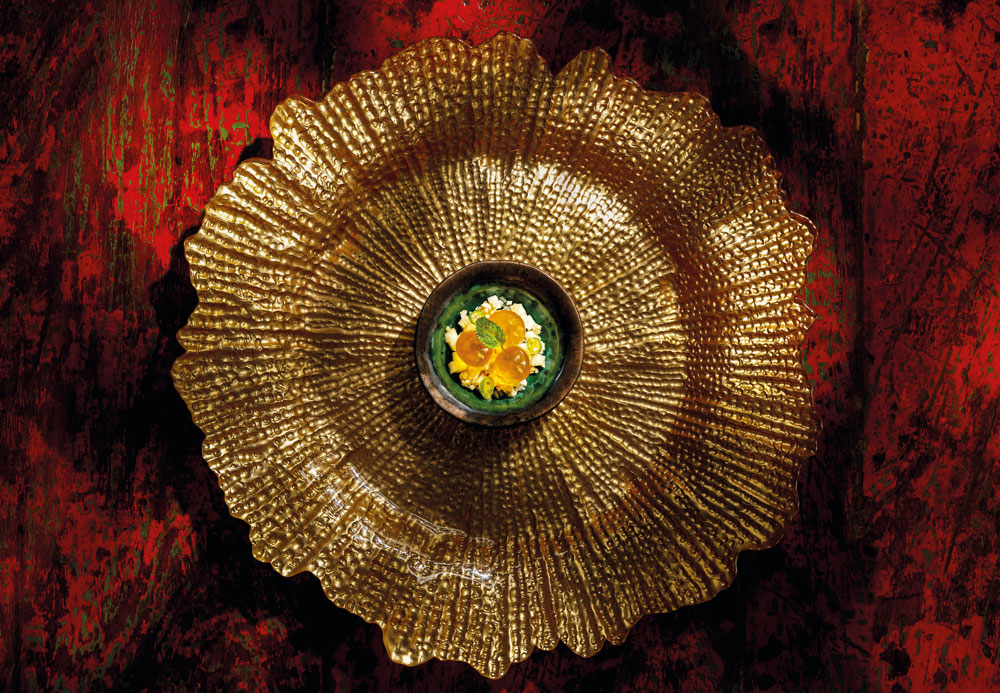
Despite its French-sounding name, the name Le Du is taken from ‘reu du’ or season in Thai language. The powerhouse behind its success is none other than Thitid Tassanakajohn or Chef Ton, as he is widely known in Thailand.
After ditching a short-lived career in banking, he endeavoured to pursue his true passion: cooking. Ton enrolled in the Culinary Institute of America in New York and working at top Michelin-starred restaurants, Eleven Madison Park, The Modern and Jean Georges. Then, he packed his knives, moved back home and opened Le Du in 2013. Inspired by the philosophy that “good food comes from good local ingredients”, Ton worked closely with local farmers, fishermen and food producers to reboot and elevate Thai cuisine. His persistence paid off when Le Du received its first one-Michelin-star accolade in 2019 and managed to retain its star in 2020. Tucked away in a quiet soi in Silom, Bangkok, the intimate restaurant is currently ranked at number 8 in Asia’s 50 Best Restaurant 2020 list.
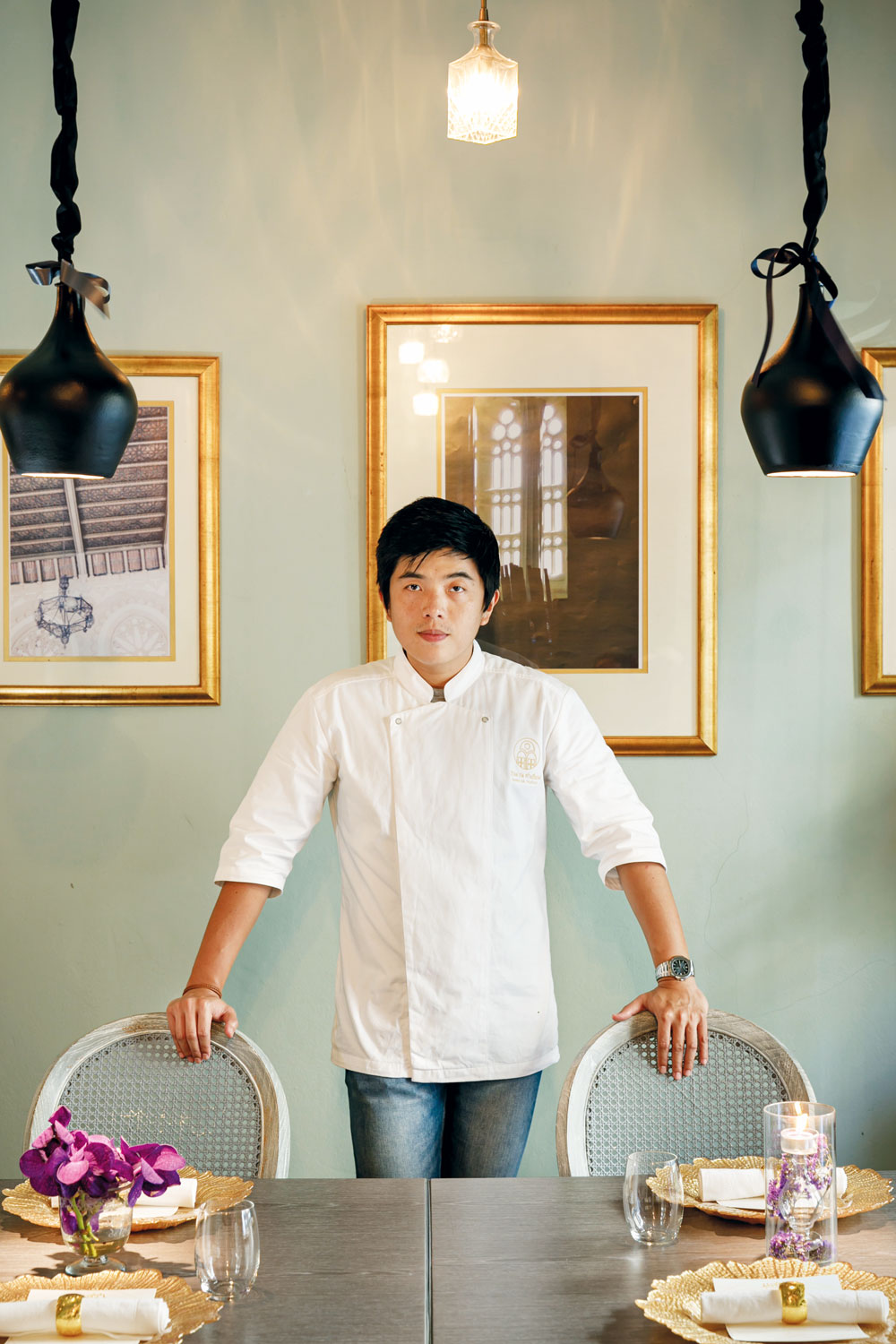
Through brazen dishes such as Ant Larvae, served with slow-cooked pumpkin in soy & garlic broth and puree of roast chilli, pumpkin and Thai basil sauce, Ton showcased the prized, seasonal ingredient in an exquisite presentation. True to its name, the tasting menu at Le Du is seasonal and ever changing, always pushing the boundary between the familiar and the progressive, while catapulting Ton forward as the torchbearer of Thai cuisine.
The entrepreneurial 35-year-old chef didn’t stop at Le Du. His most recent venture is Nusara. It opened in June, offering haute cuisine Thai kaiseki experience. With just 10 seats, Ton wants Nusara to embody the warm, genial spirit of Thai hospitality. “It is named after my late grandmother, as a tribute to her legacy. At Nusara, we want to create an experience that makes each guest feel special and feel at home,” says Ton.
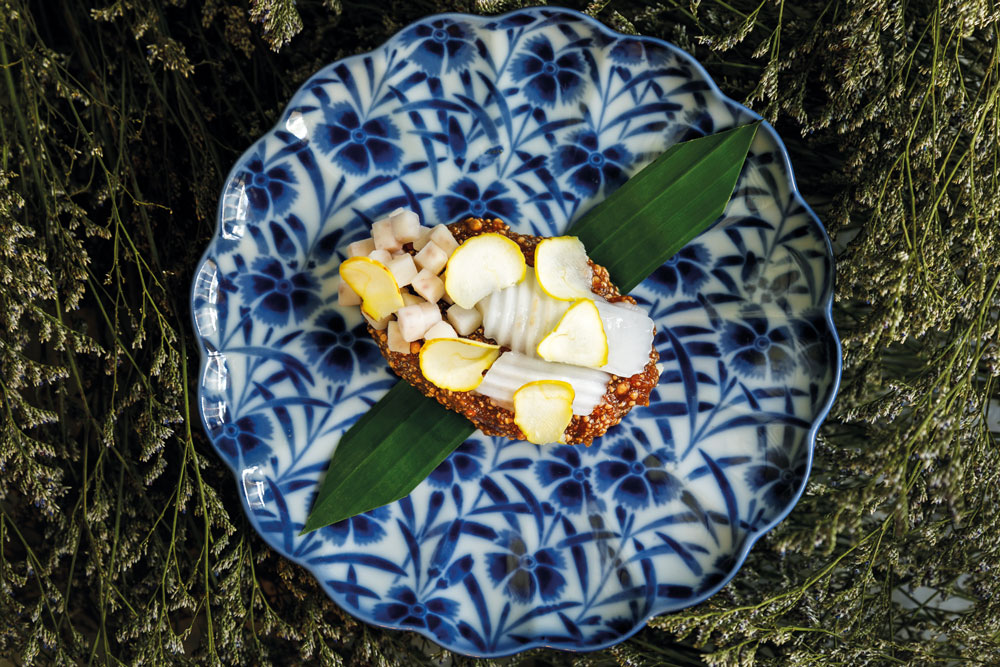
Why did you decide to open the more casual restaurants and bars after Le Du? What is the DNA of your establishments?
I want to showcase the breadth of Thai cuisine, in different spectrums and accessibility. While Le Du is my interpretation of progressive Thai cuisine, deeply rooted and yet influenced by different modern techniques, Baan offers simple homecooked meals based on my family recipe. As a natural wine bar, Mayrai offers comfort food, simple pad thai and khao soi in a casual ambience. Located in the same building as Mayrai, Nusara is about elevating traditional Thai cuisine to a refined, intimate kaiseki experience. All of the ingredients are organic and locally sourced.
With such a different approach to dining in the four restaurants and one bar, how do you define your cooking philosophy?
Every dish is Thai at its heart. The technique is probably French or the presentation may be influenced by Japanese cuisine but the taste is always Thai. I grew up eating meals from two exceptional cooks, my grandmother and mother. Thai cuisine is what I know, but along the way, I learned about the importance of working with seasons to get the freshest produce and to coax its best quality through different techniques and to present it in a way that transcends its preconceived notions. I find pleasure in exploring the boundary of underrated Thai ingredients, things that people consider common or take for granted.
In one of the kaiseki menu at Nusara, we have the Giant Sea Catfish’s roe-marinated in fish sauce and sour mango. It is inspired by the usage of ikura or salmon roe in a Japanese dish. I want to show that in Thailand, we have similar praise-worthy ingredients. Another example is sago from Phattalung Province, served with young coconut juice and shaved raw chestnut, in the similar fashion of how the Italians use its truffle.
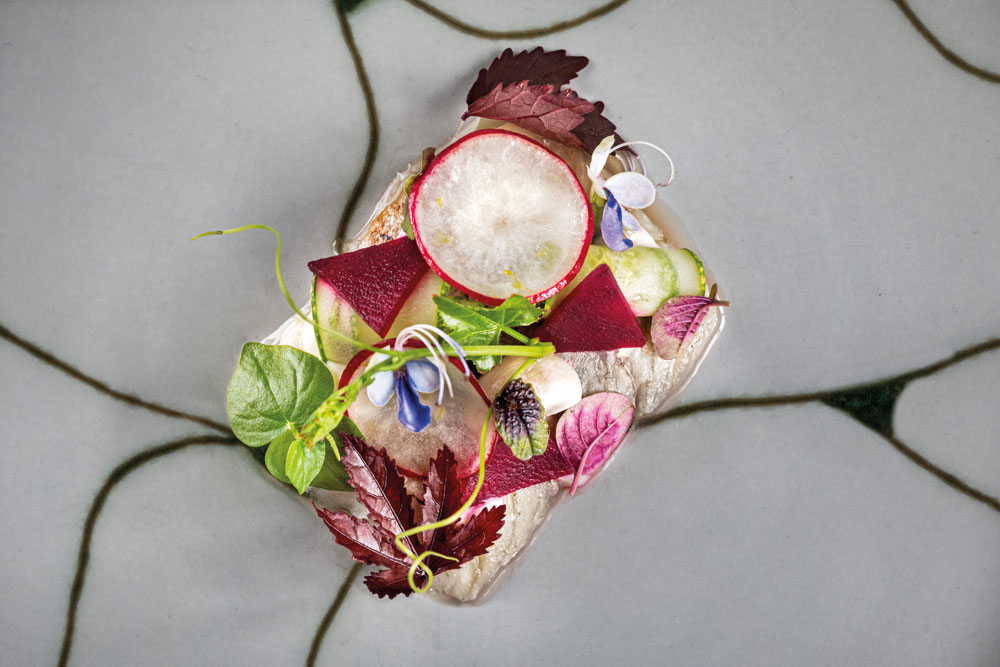
You are a Certified Sommelier. How does it help you in creating a wine pairing menu?
I have that in mind when I create a dish but it is not the only consideration. The most important thing is how to balance its flavour and texture. I love wine and that’s the reason why I decided to learn more about it from the Court of Master Sommelier when I was in New York. Some Thai dishes are spicy and very difficult to pair with wines. Often, it needs some rebalancing. I find Riesling, Gewürztraminer, Pinot Noir, Merlot, and some Champagne goes well with our tasting menu.
Tell us about your local producers.
For the longest time, Thai ingredients have been underappreciated in its own country. Imported products are considered more superior and luxurious than local ones. But this is slowly changing. Initially, I had to look for these small-scale producers and try to convince them to grow specific plants organically. Monoculture farming was and is still a big issue. It took extra effort to get them to change their perception that quality is better than quantity and that organic produce is definitely more valuable.
Currently, we work with three vegetable farms and butcheries in Nakhon Pathom and Ratchaburi. They are situated just outside Bangkok, to make sure that our produce is always fresh. For seafood, we try to work closely with 10 to 15 small-scale fisheries from the East and South of Thailand. I can proudly say that 100 percent of the food in all of our restaurants is sourced within the country.
What would you like to see more of in Thailand’s dining scene?
We’ve seen Thailand’s dining scene flourishing in the past seven years. I want to see more chefs taking Thai cuisine in different directions, and elevating it into an exceptional fine dining experience in their own individual styles. There is no point in doing it the same way as we do here at Le Du. I want to see different interpretations and I believe there is still more room to grow.
